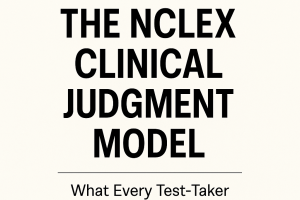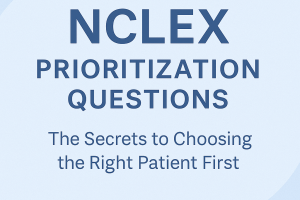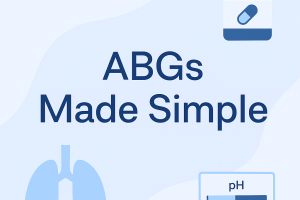NURSING PROCESS OVERVIEW: ASSESSMENT, DIAGNOSIS, AND CARE PLANS

The nursing process is a systematic and dynamic approach to providing patient-centered care. It ensures that nurses deliver the highest quality of care, focusing on the patient’
s unique needs and improving health outcomes. Central to this process are three key components: assessment, diagnosis, and care plans. Understanding and applying these elements effectively is essential for nurses to deliver safe, efficient, and holistic care. This blog offers an in-depth overview of these stages, with professional insights into how they contribute to the nursing process.
1. Assessment In Nursing
Assessment is the foundational step of the nursing process, where nurses collect, analyze, and validate information about the patient’s health status. The goal is to create a comprehensive understanding of the patient’s physical, emotional, and social needs.
Key Aspects of Assessment:
– Subjective Data: Information provided by the patient, such as symptoms, feelings, and health concerns. For example, a patient might report pain or describe difficulty breathing.
– Objective Data: Observable and measurable information gathered through physical examinations, diagnostic tests, or medical records. Examples include vital signs, lab results, and skin integrity.
– Holistic Approach: The nurse should not only focus on the immediate clinical symptoms but also consider the patient’s psychological, cultural, and environmental factors that may impact their health.
Steps in Conducting an Effective Assessment:
– Interview: Engage the patient in a conversation to gather subjective data. Use open-ended questions to encourage detailed responses.
– Physical Examination: Perform a thorough physical exam to gather objective data, checking for signs such as pulse rate, temperature, and respiratory status.
– Documentation: All findings should be accurately documented in the patient’s medical records to ensure continuity of care and serve as the basis for the next steps in the nursing process.
Question:
A nurse is conducting an assessment of a patient admitted with shortness of breath and fatigue. Which data should the nurse prioritize during the assessment?
A. Patient’s medication history
B. Pulse oximetry reading and respiratory rate
C. Family history of heart disease
D. The patient’s subjective report of past health issues
Answer:
B. The pulse oximetry reading and respiratory rate should be prioritized, as they provide objective, immediate data regarding the patient’s respiratory status. This information is critical when addressing symptoms like shortness of breath.
2. Nursing Diagnosis
After collecting and analyzing data during the assessment, the nurse formulates a nursing diagnosis. This diagnosis identifies the patient’s actual or potential health problems that the nurse can address through interventions.
Types of Nursing Diagnoses:
– Actual Diagnosis: This identifies current health problems that are present, such as “Acute Pain” or “Impaired Mobility.”
– Risk Diagnosis:This anticipates potential problems that could develop based on the patient’s health condition, such as “Risk for Infection.”
– Health Promotion Diagnosis: Focuses on the patient’s readiness to improve their health behaviors, such as “Readiness for Enhanced Nutrition.”
Formulating a Nursing Diagnosis:
Nurses use critical thinking and clinical judgment to interpret data and apply it to the nursing diagnosis. The format of a nursing diagnosis often follows the PES system (Problem, Etiology, Signs/Symptoms):
– Problem: The patient’s current or potential health issue.
– Etiology: The cause or contributing factors.
– Signs/Symptoms: Observable indicators that provide evidence for the diagnosis.
For example, a nursing diagnosis might read: Impaired Gas Exchange related to chronic obstructive pulmonary disease (COPD) as evidenced by labored breathing and oxygen saturation of 88%.
Question:
A nurse formulates the following diagnosis: Impaired Skin Integrity related to immobility as evidenced by a pressure ulcer on the sacrum. What part of the nursing diagnosis is the etiology?
A. Pressure ulcer on the sacrum
B. Immobility
C. Impaired Skin Integrity
D. Patient’s age
Answer:
B. Immobility is the etiology (cause) of the patient’s impaired skin integrity, leading to the formation of a pressure ulcer.
3. Developing Care Plans
The care plan is a blueprint for addressing the patient’s nursing diagnosis. It outlines the interventions the nurse will implement and sets measurable goals for the patient’s recovery or management of their condition.
Components of a Nursing Care Plan:
– Goals and Outcomes: The nurse sets SMART goals (Specific, Measurable, Achievable, Relevant, and Time-bound) based on the diagnosis. These goals should reflect what the patient is expected to achieve within a specific timeframe. For example, “The patient will maintain an oxygen saturation of at least 92% within 48 hours.”
– Nursing Interventions: These are the actions the nurse will take to achieve the goals. Interventions should be evidence-based and may include both independent tasks (such as administering medications) and collaborative efforts (such as working with a physical therapist).
– Evaluation Criteria: The nurse will monitor the patient’s progress and evaluate whether the goals are being met. If not, the care plan can be adjusted accordingly.
For a patient with a nursing diagnosis of Acute Pain:
Example of a Care Plan:
– Goal: The patient will report a pain level of 3 or below on a 0-10 scale within 24 hours.
– Intervention: Administer prescribed analgesics every 4 hours as needed, encourage relaxation techniques, and assess pain level every 2 hours.
– Evaluation: After 24 hours, if the patient reports a pain level of 5, the care plan may need to be revised to include stronger pain management strategies.
4. Benefits of a Structured Nursing Process
The nursing process, through its focus on assessment, diagnosis, and care planning, ensures that patient care is individualized and holistic. Some of the key benefits include:
– Improved Patient Outcomes: By identifying specific health needs and creating targeted interventions, the nursing process enhances patient outcomes.
– Effective Communication: Care plans provide a clear guide for healthcare teams, improving coordination and reducing errors.
– Continuity of Care: Thorough documentation of the assessment, diagnosis, and care plans ensures that every healthcare professional involved in the patient’s care can provide informed and consistent treatment.
Question:
A nurse develops a care plan for a patient with Acute Pain related to a surgical incision. Which of the following would be an appropriate goal for the care plan?
A. The patient will receive pain medication every 4 hours.
B. The patient will verbalize a reduction in pain from 8 to 3 on a 0-10 scale within 12 hours.
C. The patient will avoid requesting pain medication during the night.
D. The nurse will monitor the patient’s pain level every 2 hours.
Answer:
B. The goal is focused on the patient’s outcome, specifically aiming to reduce the pain to a tolerable level (from 8 to 3 on a 0-10 scale) within a specified time frame.
Question:
A nurse evaluates a care plan and finds that the goal of reducing a patient’s pain to 3/10 within 24 hours was not met. What should the nurse do next?
A. Discontinue the care plan
B. Consult the physician for stronger medication
C. Revise the care plan and interventions based on the patient’s current status
D. Reassess the patient’s pain threshold and continue the current plan
Answer:
C. The nurse should revise the care plan and interventions, considering the patient’s current condition and adjusting the treatment approach accordingly.
Conclusion
Mastering the nursing process—especially the stages of assessment, diagnosis, and care planning—is essential for providing high-quality, patient-centered care. Nurses play a crucial role in identifying patient needs, addressing them through targeted interventions, and ensuring that patients receive the best possible outcomes. By following this structured approach, nurses not only improve the efficiency of care but also foster a more supportive and safe environment for patients.






